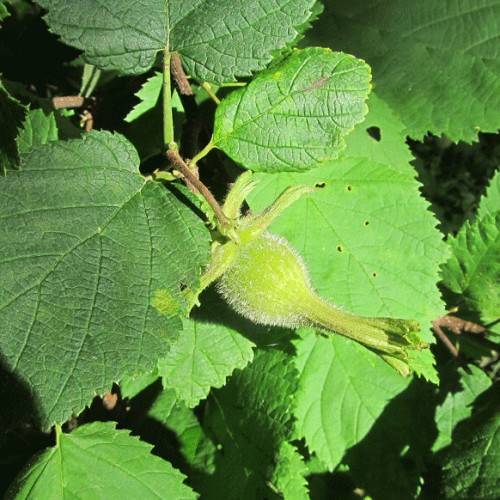
Beaked Hazel
Corylus cornuta
Cycle:
Perennial
Watering:
Minimal
Hardiness Zone:
Sun:
Partial sun Shade
Soil:
Sandy,Loamy,Clay
Cones:
Yes
Leaf:
Yes
Growth Rate:
Low
Drought Tolerant:
Yes
watering
Beaked Hazel should be watered when the top 1-2 inches of soil in the pot becomes dry. As a general rule, water your Beaked Hazel once every 7-10 days in the growing season, and once every 2-4 weeks in the dormant season. During the hot months, be sure to check the soil more frequently, as dry soil will dry out more quickly in the sun. To ensure that your Beaked Hazel is not overwatered, stick your finger into the soil or use a moisture meter to determine if water is still needed. If water runs off the soil before being absorbed, a watering session is needed. Otherwise, a light trickle of water for a couple of minutes is sufficient. When watering, always make sure to apply the water slowly and evenly, taking care not to wet the foliage.
sunlight
Beaked Hazel (Corylus cornuta) prefers full sun or partial shade, but will still grow in full shade. Plants grown in sunnier spots will be more compact with more flower buds and fewer long thin stems. It should receive at least 6 to 8 hours of direct sunlight per day, usually in the mornings and afternoons. In the hottest parts of the growing season it should be receiving hours of filtered, indirect light throughout the day. This species does not appreciate direct afternoon sun during the hottest months, so some protection from the intense heat of the afternoon sun may be necessary during summer.
pruning
Beaked Hazel (Corylus cornuta) should be pruned during its dormant season. This is usually late winter or early spring, before any new growth begins. Recommended pruning practices include removing dead, damaged, or diseased branches during the initial thinning and removal of crossing, rubbing, or weak limbs and removing suckers or vegetative growth from the base of the shrub. To maintain the desired shape, selective shaping or thinning of branches can be done to lift the canopy and produce a fuller look. However, pruning should be kept to a minimum to preserve energy reserves for healthy growth and flowering.
